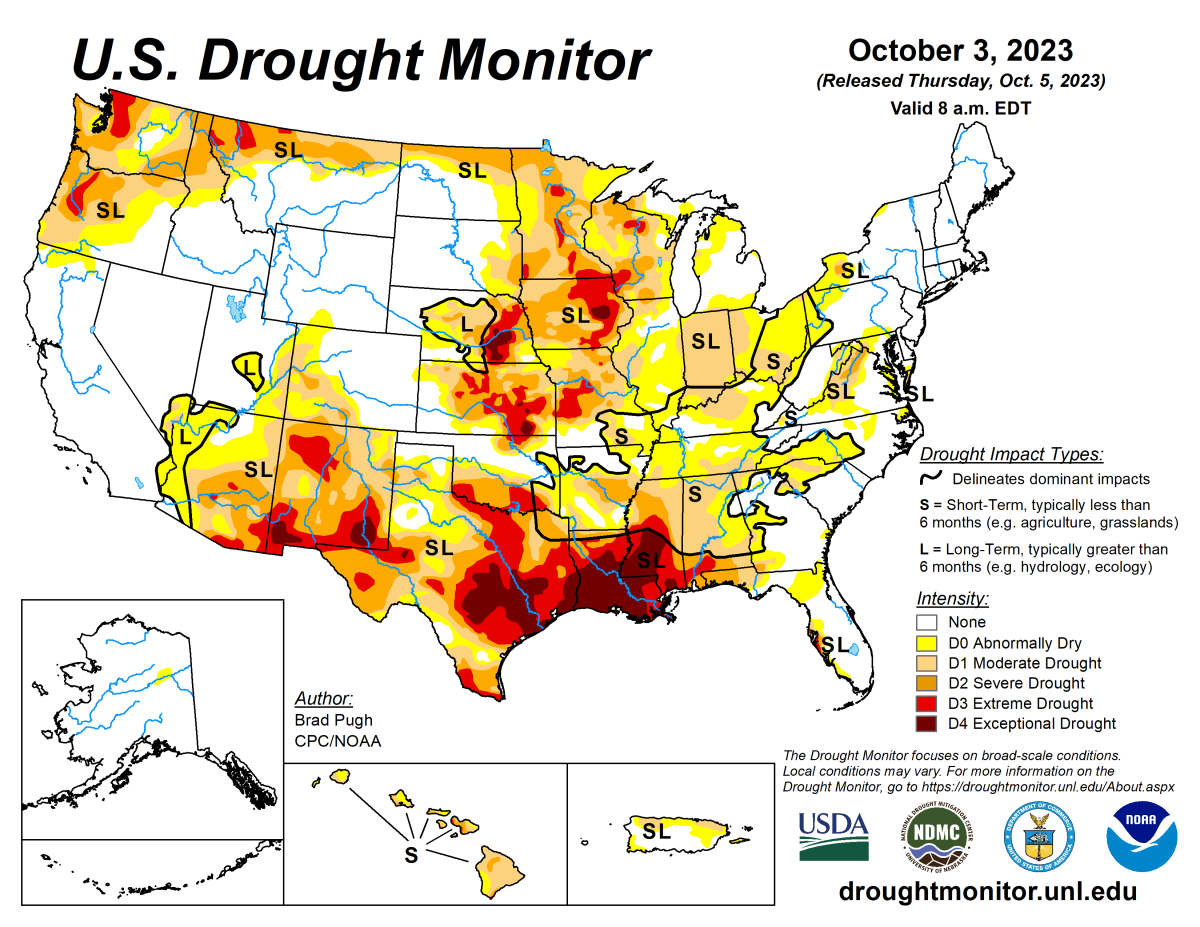
According to the October 3, 2023 U.S. Drought Monitor, moderate to exceptional drought covers 33.6% of the United States including Puerto Rico, an increase from last week’s 32.1%. The worst drought categories (extreme to exceptional drought) slightly decreased from 8.5% last week to 8.4%.
The atmospheric circulation over the contiguous U.S. (CONUS) during this U.S. Drought Monitor (USDM) week (September 27-October 3) consisted of an upper-level ridge of high pressure over the eastern half of the country and a trough of low pressure over the West. The week began with a low-pressure system stuck beneath the ridge that slowly moved to the east as the week progressed. This weather system and its associated fronts brought areas of rain to parts of the Midwest, the Florida peninsula, and coastal parts of the Northeast. The fronts also brought near- to cooler-than-normal temperatures to the East Coast. But the ridge dominated the weather, with warmer-than-normal temperatures and little to no rain being the rule across most of the Plains to the East Coast. The core region of the heat stretched from the central Plains to the western Great Lakes where weekly temperatures averaged 10 to 20 degrees above normal.
Meanwhile, several Pacific low-pressure systems and their cold fronts moved into the western trough, bringing above-normal precipitation and cooler-than-normal temperatures to most of the West. The Pacific fronts stalled out over the Great Plains as they bumped into the ridge, triggering showers and thunderstorms that brought above-normal precipitation to western parts of the Plains. Above-normal precipitation contracted drought or reduced its intensity in a few parts of the western Plains, Pacific Northwest, and Midwest. But continued dry conditions expanded or intensified abnormal dryness and drought in areas from the Lower Mississippi Valley to the Southeast, and from the central Plains to the western Great Lakes.
A subpar summer monsoon resulted in additional expansion or intensification of drought or abnormal dryness in parts of the Four Corners states. Nationally, expansion exceeded contraction, so the nationwide moderate to exceptional drought area increased this week.
Abnormal dryness and drought are currently affecting over 151 million people across the United States including Puerto Rico—about 48.6% of the population.

The full U.S. Drought Monitor weekly update is available from Drought.gov.
In addition to Drought.gov, you can find further information on the current drought as well as on this week’s Drought Monitor update at the National Drought Mitigation Center.
The most recent U.S. Drought Outlook is available from NOAA’s Climate Prediction Center and the U.S. Department of Agriculture provides information about the drought’s influence on crops and livestock.
For additional drought information, follow #DroughtMonitor on Facebook and Twitter.



